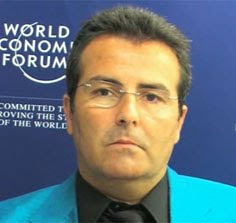The Global Gender Gap Report
Ricardo Hausmann, Harvard University
Laura D. Tyson, University of California, Berkeley
Saadia Zahidi,World Economic Forum
Mide las diferencias entre hombres y mujeres para el acceso a la política, economía, salud, trabajo…
The Index is designed to measure gender-based gaps in
access to resources and opportunities in individual countries
rather than the actual levels of the available resources
and opportunities in those countries.
Convert to ratios
First, all data are converted to female/male ratios. For
example, a country with 20% of women in ministerial
positions is assigned a ratio of 20 women /80 men =
0.25 on this variable. This is to ensure that the Index is
capturing gaps between women’s and men’s attainment
levels, rather than the levels themselves.
Desde 2006
España, en el puesto 11.
The result puts Switzerland alongside Finland,
Norway, Spain and Cape Verde as countries identified by
the Inter-Parliamentary Union as having a majority of
women in government.
Spain moves up six places in the overall report rankings,
improving its scores across all subindexes to regain
the same overall position it held in 2006. It records some
small gains in the category of women’s economic participation
and opportunity (increases in female labour force
participation, wage equality and estimated earned income,
as well as in the numbers of female professional and technical
workers). Spain’s strengths include the number of
women in ministerial positions, an area where Spain is
among the countries with the highest percentage out of
the 134 countries covered.
However, Spain still ranks towards the very bottom on wage equality, assuming 117th
position. Improvements to Spain’s performance in terms of
women’s economic participation may be expected in the
future following the recent introduction of a law that obligates
all companies with more than 250 employees to create
gender equality plans and the largest companies to
have 40-percent female boards of directors by 2015. The
new law also grants 15 days’ paternity leave to new
fathers. In addition, women must take up at least 40 percent
of the lists of candidates that parties field in elections,
under the new law.
Switzerland, Belgium, Spain, Finland
and Ireland show the largest absolute increases in score,
amounting to relative changes of more than 14% when
compared to their performance in the year 2000.
The Global Gender Gap Report 2010 is
published by the World Economic Forum. The
Global Gender Gap Index 2010 is the result of
collaboration with faculty at Harvard University
and the University of California, Berkeley
© 2010 World Economic Forum
All rights reserved.







